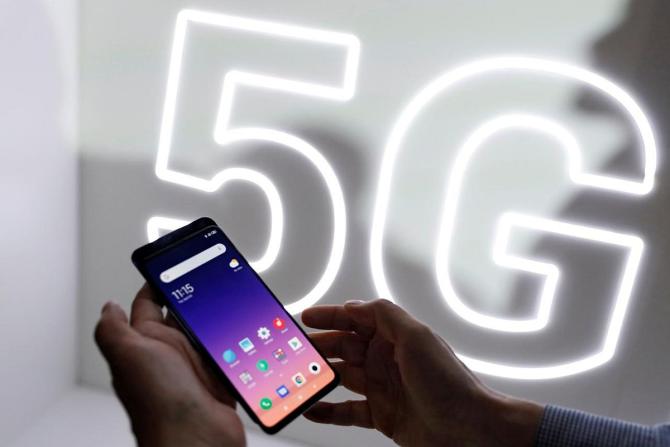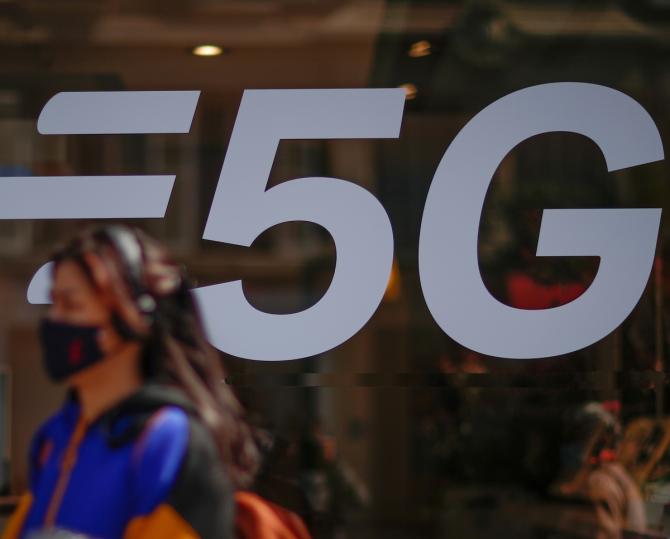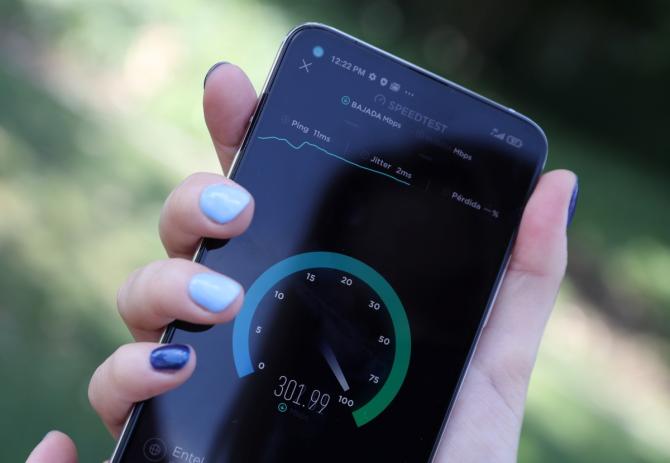Why India denied China 5-G trial

Given the security dilemma prevailing between India and China, India should curb the operation of Chinese telecom companies in India, assserts Dr Rup Narayan Das.
On May 4, the Department of Technology gave the nod to 5G trials permission to mobile operators in India that included Reliance Jio, Airtel, Vodafone, Idea and MTNL who will tie up with network providers such as Sweden’s Ericsson, Finland’s Nokia, South Korea’s Samsung and state-owned C-DOT.
Conspicuously, two main Chinese players — Huawei and ZTE, as expected — were missing in the list provoking Chinese protest.
Ever since the telecom revolution in India, Chinese telecom companies have been eyeing the lucrative Indian telecom market.
Huawei and ZTE, the two key Chinese players in the field, started operations in India, as early as 1998-1999 by setting up software outsourcing centres.
In the initial years from 1998 to 2005, their success in the Indian telecom sector was constraint due to widely held perceptions of poor equipment quality, as well as security concerns.
In 2001, US intelligence sources reportedly tipped off the Indian government about Huawei’s activities in India.
Huawei’s breakthrough came in 2005-2006 when it used low-priced tactics and a variety of other methods to win business with ITI, BSNL and MTNL.
The Chinese behemoth set up a local manufacturing base Sriperumbudur near Chennai with an investment of $500 million in 2010 and started an R&D centre in India which is its biggest outside China, employing 2,000 people in 2010.
In the initial years of its operation, Huawei couldn’t generate significant orders because of security concerns.
There were reports that Chinese equipment makers were placing malware and spyware in their equipment.
Huawei, however, did a turnaround of its business, when it became the first foreign IT company operating in India to comply with the home ministry’s demand to share its source codes with the law-enforcing authorities of the government of India.
Yet another Chinese IT major which has made a major inroad into the Indian IT market is ZTE, which entered India in 1999, but didn’t win any orders until 2002.
Then, from 2004 to 2009, ZTE’s turnover in India grew from $100 million to nearly $1 billion, making India ZTE’s largest overseas market and its biggest market after China.
ZTE is the fourth-largest player in the Indian telecom equipment market, following Ericsson, Huawei and Nokia Siemens Networks.
An important issue that has been factored into while giving permission to telecom players has been their implication on cybersecurity.
Earlier a report, prepared by India’s Computer Emergency Response Team (CERT-In), which comes under the ministry of information technology analysed cyber-attacks from April-June 2018.
CERT-In is the nodal agency which deals with cybersecurity threats like hacking and phishing. It collects, analyses, and disseminates information on ‘cybersecurity incidents’.
According to the report, it was observed that China continues to ‘intrude’ Indian cyberspace in a ‘significant’ way.
The cyber-attack from China made up 35% of the total number of cyber-attacks on official Indian Websites followed by the US (17%), Russia (15%), Pakistan (9%), Canada (7%), Germany (5%%).
Recently there were media reports saying State-sponsored Chinese hacker groups targeted various Indian power centres including NTPC in February this year. However such attempts were foiled.
It is in this context that the government has been mulling over a policy framework to regulate foreign investments more closely in the Internet and smartphone business, especially in view of the increasing Chinese presence in these sectors.
The policies are meant to deal with the increasing digital colonisation of India.
The aim is not to stop or restrict foreign investments but to install safeguards that will ensure that India’s security is not compromised.
This assumes significance as Chinese and American companies either directly control large parts of the Internet business or have tremendous influence as investors in local start-ups, even in strategically important areas such as financial services and content.
As far as implications for national security is concerned, it may be mentioned that telecom networks are strategic assets of a country and play a very vital role in many critical sectors such as defence, government, power, railways, oil and gas.
They are the delivery vehicles for a large number of services like health-care, education, financial services and e-governance, UID etc.
From a security angle, telecom networks are one of the most mission-critical elements, forming the backbone for secure and timely communications.
Since the hampering of telecom infrastructure in war times can act as a force multiplier, it is imperative that telecom networks are built from trusted sources.
In addition, network elements are complex hardware and software which can have malware concealed, which can be activated to divert any sensitive information or data to unintended locations or even disrupt the network, Indian telecom networks, in particular, are highly vulnerable given that most of the network equipment is imported.
In fact, more than 60 per cent of the network equipment currently being used in India is of Chinese make, and even the imported products from the US/Europe, have a lot of manufacturing physically done out of the Chinese factories.
The penetration of the Chinese telecom sector has no doubt benefitted Indian telecom users in terms of its affordability and employment generation.
Over the years the Chinese players in the telecom sector have been well entrenched in India.
It is in this context that the issue of security concerns seems to need to be addressed with seriousness.
It augurs well, however, ever since the Narendra Modi government came to power in 2014, the government has been taking policy initiatives to encourage and incentivise domestic production of telecom equipment.
Public Procurement Order 2017 envisages that if a nodal ministry is satisfied that Indian suppliers of an item are not allowed to participate and/or compete in procurement by any foreign government, it may, if it deems appropriate, restrict or exclude bidders from that country for being eligible for supplying that item and/or other items relating to the nodal ministry.
To realise the intent of the government, the Union Cabinet on March 20, 2020 approved three new schemes worth over $6.4 billion to promote large scale electronics manufacturing, electronic component, and semiconductor manufacturing in the country.
It is strongly felt that given the security dilemma prevailing between the two countries, India should curb the operation of Chinese telecom companies in India.
Dr Rup Narayan Das is a senior fellow at the Indian Council of Social Science Research at the Indian Institute of Public Administration, New Delhi. The views in this column are personal.
Feature Presentation: Rajesh Alva/Rediff.com
Source: Read Full Article




